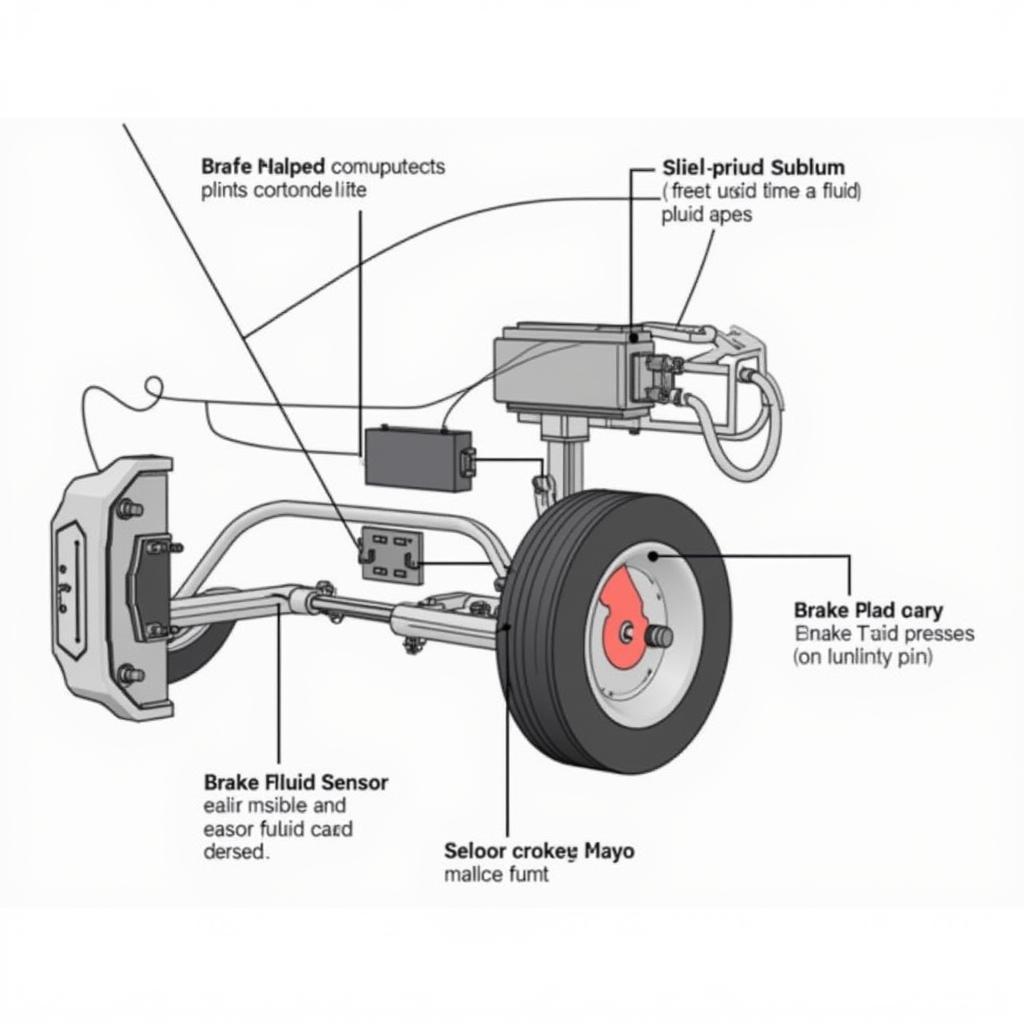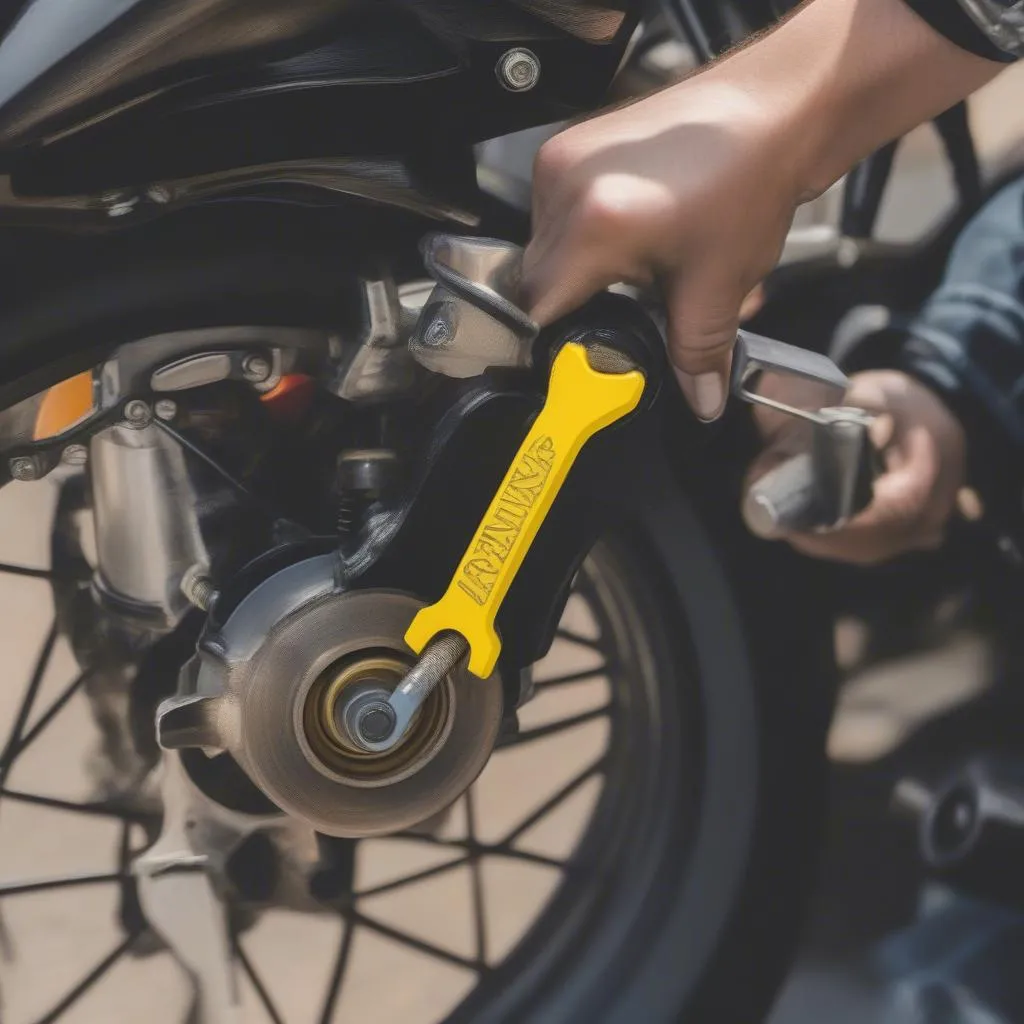A Tesla brake warning light appearing on your dashboard can be a nerve-wracking experience. It’s a clear indication that something within your vehicle’s complex braking system requires attention. While it’s natural to feel concerned, understanding the potential causes and solutions can help you address the issue effectively and safely.
This comprehensive guide delves into the common reasons behind a Tesla brake warning, offering insights into how to diagnose the problem and explore possible solutions.
Deciphering the Warning: Different Types of Tesla Brake Warnings
Before diving into solutions, it’s crucial to understand what your Tesla is trying to tell you. Here are some common brake-related warnings you might encounter:
- Red Brake Warning Light: This is the most serious warning, indicating a critical issue with your braking system. Stop the car immediately and contact Tesla Roadside Assistance.
- Yellow Brake Warning Light: This signifies a less severe issue, often related to the regenerative braking system or a potential sensor problem. While you can continue driving cautiously, it’s crucial to schedule a service appointment promptly.
- “Brake Fluid Low” Message: This indicates a drop in brake fluid level, which could signify a leak. Address this issue promptly to avoid potential brake failure.
- Park Brake Malfunction Warnings: These vary depending on the issue but often relate to problems with the electronic parking brake.
Common Causes of Tesla Brake Warnings
Understanding the potential culprits behind a brake warning can expedite the diagnostic process:
- Software Glitches: Like any computer-based system, Tesla’s braking system relies heavily on software. Glitches or errors in the software can sometimes trigger false warnings.
- Sensor Malfunctions: Teslas use various sensors to monitor brake fluid level, brake pad wear, and other braking parameters. A faulty sensor can send incorrect signals, triggering a warning light.
- Brake Fluid Leaks: Low brake fluid is a serious issue. A leak in the brake lines, calipers, or master cylinder can cause a drop in brake fluid level, triggering a warning.
- Worn Brake Pads: While Teslas have regenerative braking that reduces wear on traditional brakes, brake pads eventually wear down. W worn brake pads can trigger a warning.
- 12V Battery Issues: A weak or failing 12V battery can lead to various electrical issues, including false brake warnings.
 Components of a Tesla Braking System
Components of a Tesla Braking System
What to Do When You See a Tesla Brake Warning
Depending on the type of warning and its severity, your course of action will vary:
1. Red Brake Warning:
- Pull over safely and immediately. Do not attempt to continue driving.
- Contact Tesla Roadside Assistance. They can diagnose the issue and tow your vehicle if necessary.
2. Yellow Brake Warning or Other Messages:
- Schedule a service appointment with Tesla as soon as possible. While driving may be possible, it’s essential to have the issue addressed promptly.
- Monitor your driving: Be extra cautious and maintain a safe distance from other vehicles.
Troubleshooting Tips for Potential Software Issues
If you suspect a software glitch may be causing the brake warning:
- Reboot your Tesla’s touchscreen: This can often resolve minor software hiccups.
- Check for software updates: Tesla frequently releases over-the-air software updates that may address known bugs affecting the braking system.
The Importance of Regular Maintenance
Like any vehicle, regular maintenance is crucial for optimal performance and safety. For your Tesla’s braking system, this includes:
- Brake Fluid Checks: Tesla recommends checking brake fluid every 40,000 miles, or as needed, to ensure it’s at the correct level and hasn’t become contaminated.
- Brake Pad Inspections: While Tesla’s regenerative braking system reduces brake pad wear, it’s essential to have them inspected regularly for wear and tear.
- 12V Battery Health: Monitoring and maintaining the health of your Tesla’s 12V battery can prevent a range of electrical issues, including potential false warnings.
Seeking Professional Help
While some Tesla brake warning issues might be resolved with simple troubleshooting, it’s always recommended to seek professional diagnosis and repair for any brake-related concerns. Contacting Tesla Service or a qualified Tesla technician is the safest approach to ensure your vehicle’s braking system is functioning correctly.
Remember, your safety is paramount. Don’t hesitate to contact professionals if you’re unsure about any aspect of your Tesla’s brake warning or its underlying cause.
FAQ
1. Can I still drive my Tesla with a brake warning light on?
It depends on the type of warning. A red brake warning demands an immediate stop. A yellow warning or other message means you should schedule a service appointment promptly but may allow for cautious driving.
2. How much does it cost to fix a Tesla brake issue?
The cost varies widely depending on the problem’s root cause. It could range from a simple sensor replacement to more complex repairs involving the braking system’s components.
3. How can I prevent Tesla brake warnings in the future?
Regular maintenance, including brake fluid checks, brake pad inspections, and 12V battery care, is key to preventing many brake-related issues.
4. Are Tesla brake warnings common?
While Tesla vehicles are known for their advanced technology, brake warnings can occur, just like with any other car. They are not inherently more common in Teslas.
5. What if my Tesla brake warning light comes on and then disappears?
Even if the warning disappears, it’s crucial to have your Tesla inspected by a professional. Intermittent warnings could indicate a developing problem that requires attention.

